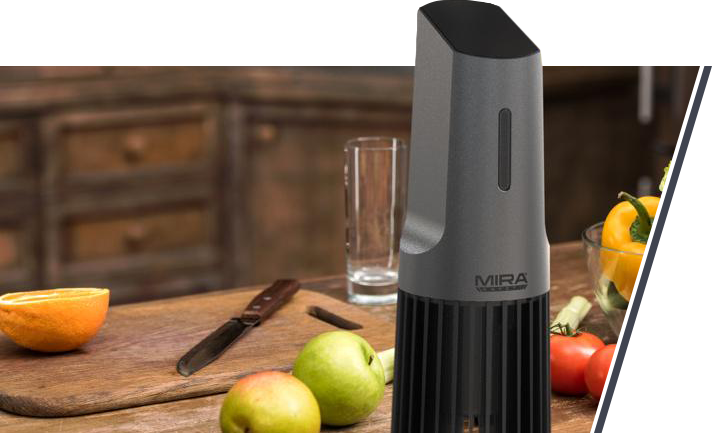When someone thinks of the largest organism on Earth, their mind tends to lean toward elephants, giraffes, or the aquatic living blue whale.
So, it might surprise many that the largest organism is actually… a mushroom.
In Oregon, a behemoth of fungus-kind is paving its way across more than 2,200 acres of land in what we now know as the Malheur National Forest. It has grown despite challenges for over 2,400 years, with roughly an acre of land consumed by the shroom each year.
Though it may seem like a troublesome, almost parasitic entity, it’s worth mentioning that this monstrous mushroom poses no threat to our way of life.
But is that the case for all mushrooms? You’ll find the answer to that question and much more in this article, where we’ll be covering all things related to mushroom safety.
Table of Contents
-
01
Mushrooms Once Ruled the Land
-
02
What Are Fungi?
-
03
Mushrooms in Pop Culture
-
04
The Good, the Bad, and the Fungi
-
05
Mushroom Safety, A Brief Guide to Eating Fungi
-
06
Conclusion
Mushrooms Once Ruled the Land
Hundreds of millions of years ago, the vast majority of life was isolated to the seas and oceans of a still-maturing planet. While the waters stirred with organisms yet to dream of open lands, the first mushrooms were taking root.
(Image source: Image courtesy of Paleo Bites)
According to studies conducted by a group of researchers headed by Professor Steeve Bonneville from the Université Libre de Bruxelles, countless varieties of fungi littered the land.
Professor Bonneville and his associates believe that ancient fungi may have been integral during the migration of plant life, serving to bridge the gap between seascapes and landscapes.
Perhaps the most impressive and controversial of all fungi were the Prototaxites. Discovered and collected in 1843, the Prototaxites fossils were unlike any fungus that exists today. Prototaxite, roughly translating to “first yew” or “first tree,” measured 3 feet wide and as much as 24 feet tall.

(Image source: Image courtesy of NBC News)
They were more similar to modern trees than any fungus we might encounter today. The only reason we know Prototaxites existed at all is due to the fossilized remnants recovered by archaeologists.
The Prototaxites weren’t even determined to be of fungal lineage at first. John William Dawson, geologist and university administrator, was the first to propose that the Prototaxites were large coniferous trees killed off by fungus. This idea found support in evidence of fungal decomposition, similar to what a fungus might do to a dead tree in our modern world. Still, it was later disputed and even admonished by the scientific community.
After over a century of debate, we fast-forward to 2001, where researcher Francis Hueber of Washington’s National Museum of Natural History published a paper that sought to cement the Prototaxites as a fungus. In 2007, isotopic analysis and other evidence backed Hueber’s claim.

(Image source: Image courtesy of Wikipedia)
The isotopic analysis aimed to determine whether or not the Prototaxites were surviving via photosynthesis as plants are known to do. Scientists found that the Prototaxites lacked the defining traits of plant life and were more likely to have fed upon the deceased life surrounding them, much like the fungi of today.
With the onset of plant life and the eventual migration of animals from the oceans to the intercontinental planes, the more benign nature of the fungi was eventually overwrought by more aggressive means of survival. Despite that fact, fungus remained a staple of the natural cycle. Where plants would provide oxygen for the animals, and animals would provide a means of fruition for plants, the fungi would continue to act as nature’s recycler.
What Are Fungi?
As a life form, fungi do not possess a means of eating food, and they can not supply their food source via photosynthesis, as previously stated. They instead use their mycelia to procure nutrients from their surroundings. Examples of this include mushrooms growing on dead wood, forest floors heavily littered with plant debris, or in some cases, animal carcasses.

(Image source: Image courtesy of Smithsonian Magazine)
A unique quirk of fungi is their ability to spread via spores and their branching mycelia (the singular being mycelium), a network of root-like structures called hyphae. The mycelia serve as a foundational support system for the fungi.
The shape and purpose of mycelia can differ between fungi, with some spreading out similar to vines or moss. Of course, the most commonly known fungi will grow stalks upward from the mycelia and eventually produce the titular “mushroom” we’re all familiar with.
Once a mushroom has matured, it produces a pileus, commonly known as the mushroom cap. The pileus is the mushroom’s way of reproducing, housing a set of gills, teeth, ridges, or pores that exude spores. Spores act similarly to pollen in that they spread using outside forces such as wind, animals, and insects with the hope of finding purchase in fertile soil.

(Image source: Image courtesy of Pure Essence Labs)
Spores differ from pollen because they do not require an additional sexual cell to reproduce. However, compatible spores can form a new fungus in some cases. You can think of spores like pollen and seeds combined.
Despite all of the information you may be able to find about fungi, there is still so much we don’t understand. This shortfall of understanding is due primarily to the fact that we don’t have the resources to accurately measure the entire life cycle of every fungus we encounter.
Tracking and measuring fungus is a time-consuming experience, according to Carles Castaño and fellow researchers who would venture to find a better means of studying fruiting mushrooms. While our understanding of fungi has improved due to modern techniques, we still have much to learn about our fungal friends.
Perhaps the mystery behind mushrooms is why they constantly appear throughout the media. While some mushrooms are undoubtedly edible and nutritious, others have sprouted a different following for more … “colorful purposes.”
Mushrooms in Pop Culture
While fungi do not exclusively produce mushrooms, the mushroom is undoubtedly the most prolific representation of the fungi family in our culture. Movies, video games, and novels across the globe have repeatedly sought to represent mushrooms as a home staple.

(Image source: Image courtesy of Amazon)
If you’ve been around in the last 50 or so years, you’ve probably seen at least one illustration of fairies or elves sitting among mushrooms, looking to be at ease. These illustrations illicit a sense of wanderlust in some and anxiety in others.
In 1985, the video game “Super Mario Brothers” was released on the Nintendo Entertainment System. Even if you’ve never played a single video game in your entire life, you’re more than likely to know about Mario and his propensity for consuming “Super Mushrooms.”
These Super Mushrooms aid in his quest by boosting his vitality and seemingly making him grow in size. While this may be an iconic trope for Mario, it may surprise some that he wasn’t the first to eat a mushroom and grow in size.

(Image source: Image courtesy of Threadless)
In 1865, author Lewis Caroll imagined a world of wonderment and horror in equal measures: Alice’s Adventures in Wonderland. The book saw the title character, Alice, following a white rabbit into the mythical world of Wonderland. During her time, she came across a mushroom that beckoned her to eat it.
Consuming it resulted in Alice growing many times her average size. This representation of consuming a mushroom and experiencing an altered sense of self has equated to the psychedelic effects of Amanita muscaria, commonly known as the fly agaric or fly amanita.

(Image source: Image courtesy of Amazon)
Referencing those illustrations of fairies sitting among mushrooms once again, more often than not, the mushrooms will be sporting a red cap with white spots. The fly agaric is perhaps the most iconic mushroom in pop culture or even historically, and it has become the blanket representation of mushrooms.
Alice in Wonderland and Super Mario are the most prevalent examples in America. Meanwhile, in Belgium and Europe, a comic series called Les Schtroumpfs, or The Smurfs, became popular in 1958.
As small, blue, humanoid creatures dreamt up by fantastical artist Pierre Culliford, it was only natural that they made their homes inside the iconic mushrooms.
Originally a comic series that became a cartoon television show, The Smurfs became a divisive cultural phenomenon. While some found them adorable and enjoyed their antics as innocent hijinks, others would decry the Smurfs as encouraging drug use.

(Image source: Image courtesy of Kidscreen)
So, with all of this in mind, the question still stands: Why fly agaric? Why not any of the other mushrooms we’ve used throughout history?
It comes down to historical usage. Throughout Asia and much of Eastern Europe, shamans and religious leaders would create a drink from fly agaric mushrooms that they would ingest to “speak with the spirits.”
Some researchers think that the mythos of Santa Clause began with the Koryaks of Siberia and their consumption of fly agaric mushrooms. Locals also noted that wild reindeer in the area liked to consume the mushrooms, displaying an altered state of mind and jumping around in a way they would not normally behave.

(Image source: Image courtesy of Inhabitat)
After their growth in Autumn, some shamans would give the mushrooms as gifts in late December. Giving these mushrooms provides even more evidence for the connection between their culture and the eventual advent of Santa Clause. While the shamans would gather the mushrooms, they would wear those same red clothes with white trim, an all too familiar if not out-of-fashion garb.

(Image source: Image courtesy of Psychedelic Spotlight)
Ingestion of the fly agaric would allow them to “perceive the spirit realm.” After ingestion, the imbiber displays a red nose and rosy cheeks. Sound familiar? Like a particular jolly gift giver we all know?
Whether you believe Santa Clause was a manifestation of psychedelics or the idea of artist Haddon Sundblom, most famous for depicting Santa Clause with a Coca-Cola bottle, you’d be hard-pressed to call it a coincidence.

(Image source: Image courtesy of Coca-Cola Company)
So, are psychedelics just fun and games? They may be more dangerous because we regard them highly in pop culture. In the case of a 44-year-old man who consumed the mushrooms for recreational purposes, fun and games almost turned into a fatal mistake.
If not for the quick action of medical professionals, he and many other unfortunate cases may have fallen victim to deadly poisoning. While fatal poisoning from the consumption of fly agaric is rare, it is still worth mentioning to learn from the mistakes of others.

(Image source: Image courtesy of Egor Kamelev)
After all, mushrooms—like any other life form—don’t want to be eaten, and the poisonous and psychedelic effects are a means to fend off consumption. If you’re interested in safely consuming mushrooms, perhaps the following will assist you.
The Good, the Bad, and the Fungi
Understanding the difference between safe-to-eat and poisonous mushrooms is necessary. So is finding a good mushroom identification guide. Such a guide is crucial in safe mushroom consumption and should be your first and last step before eating any fungi.
It is important to note that while certain mushrooms may be safe for some people, they may also endanger others. With this in mind, it’s better to be safe than sorry and only eat mushrooms identified by a reliable source.

(Image source: Image courtesy of Cascade Mycological Society)
A good practice for anyone is to avoid collecting and eating mushrooms from the wild unless you’re an experienced mushroom hunter and can accurately identify the mushrooms you find. If in doubt, it would be in your best interest not to eat the mushroom and reference a guide or consult with a professional.
As stated previously, consuming poisonous mushrooms can be extremely dangerous and even lethal in some cases.
In the mildest cases, consuming poisonous mushrooms will lead to immense discomfort. In more severe cases, there is the potential for lasting effects. These adverse effects include liver failure, kidney failure, and possibly, neurological sequelae—a blanket term for many issues affecting the central nervous system.
Accidental poisonings from mushrooms may occur when a forager misidentifies a poisonous mushroom. However, this is rarely the case, as most mushroom poisonings occur due to intentional ingestion of known toxic mushrooms, such as the ever-famous (or infamous) fly agaric.
There is no broad, surefire way to determine whether or not a mushroom is safe to consume. A standard set of “rules” in the United Kingdom has circled their communities for centuries. Eric Biggane, Director and Foraging Instructor of Wild Food UK, refers to these practices as “fanciful if not downright misguided.”

(Image source: Image courtesy of Pixabay)
If you are unsure about the safety of a mushroom, it is best to err on the side of caution and avoid consuming it.
But let’s assume you’ve found a wild mushroom, taken the necessary precautions, and determined that it is safe to eat. Like anything else, you can’t be sure that the fungus in question is untainted by fungicides or pesticides from surrounding areas.
You can rely on your local grocery store to only stock safe-to-eat fungi when in doubt. For adventurous people, however, you may be tempted to seek out the wild, edible mushrooms in your community. In cases such as this, it’s best to clean the mushrooms properly. That’s why we recommend the MIRA Safety DTX-1 Oxidizing Food Detoxifier—the perfect solution for cleaning your fruits, vegetables, meats … and fungi.
With its advanced technology, the DTX-1 can remove debris, heavy metals, pesticides, and fungicides in just a few minutes, leaving your food clean and safe to eat. Its compact design and easy-to-use interface make it perfect for any kitchen. Its sleek, modern appearance will look great on your countertop.

Don’t risk your health by eating contaminated food—trust the DTX-1 to keep your food safe and clean. Get yours today!
Mushroom Safety, A Brief Guide to Eating Fungi
Edible mushrooms are a popular ingredient in many dishes due to their savory flavor and nutritional value.
There are many different types of edible mushrooms, each with its unique flavor and texture. Some of the most common edible mushrooms include button mushrooms, shiitake mushrooms, and oyster mushrooms. These varieties can be easily found in most grocery stores and used in assorted dishes, from soups and stews to stir-fries and salads.

(Image source: Image courtesy of photographer Engin Akyurt)
In addition to their delicious flavor, edible mushrooms are also a good source of nutrition. They are low in calories and fat but high in fiber, protein, and a range of vitamins and minerals. For example, shiitake mushrooms are good sources of vitamins B and D, and button mushrooms contain significant amounts of potassium and copper.
Besides their culinary uses, mushrooms also have a range of health benefits. Some studies have suggested that consuming mushrooms can help boost the immune system, lower cholesterol levels, and even reduce the risk of certain types of cancer.
When preparing and cooking, there are a few key things to remember concerning mushroom safety.
First, mushrooms should be stored in a cool, dry place—such as your refrigerator—and used as soon as possible for the best flavor and texture. They can be cleaned with a damp cloth or paper towel but not under running water if you plan to serve them raw. However, this doesn’t apply to cooked mushrooms.

(Image source: Image courtesy of photographer Cottonbro)
When cooking mushrooms, it is essential to cook them over medium heat and avoid overcrowding the pan, as this will help them to cook evenly and prevent them from becoming soggy. It is also good to season mushrooms with salt, pepper, herbs, and spices to enhance their flavor.
Conclusion
The immense impact of mushrooms throughout history is telling for the foreseeable future. I’d like you to consider the enormous fungus that inhabits the Malheur National Forest in Oregon once more. Without some outside intervention, it will continue to grow, further cementing its title as the largest organism on Earth.
While the growth of a fungus might not be the most meaningful event in human history, it is symbolic of the steps we take forward as a global community. As we delve deeper into the mysteries of our world and the foods we eat, we can only hope to uncover the truth so that we may grow with it as well and maintain best mushroom safety practices.

(Image source: Image courtesy of The What If Show)





